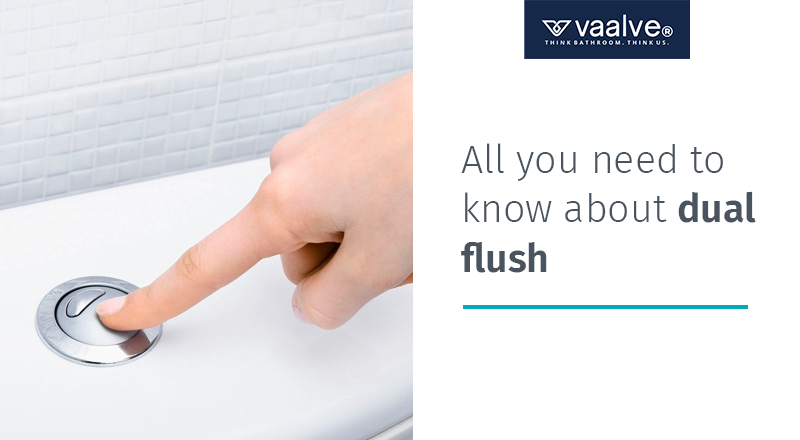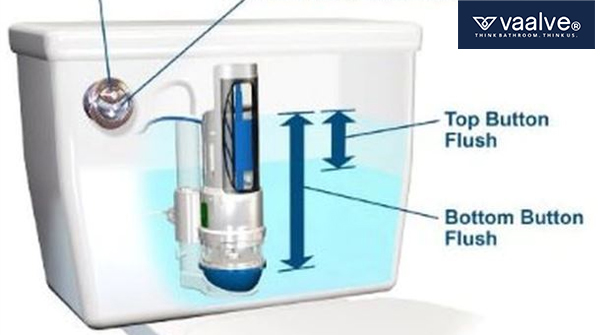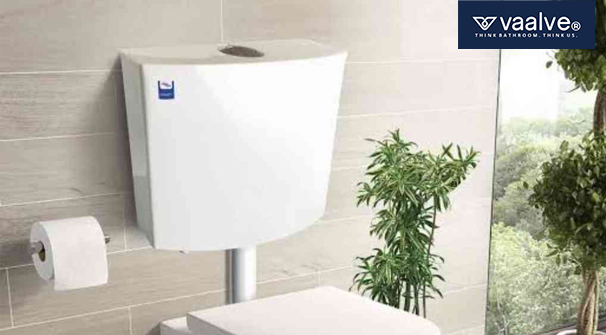
The times that we live in require for a conscious and sustainable lifestyle to be adopted and integrated into our lives. With the rising effects of global warming and the availability of natural resources being at a stretch already, switching to environmentally conservative practices are a way for people to contribute to the bare minimum effort toward saving the planet.
But wait, how is all that relevant here?
The answer to it is that if you want to do your own, little bit in saving water, getting a dual flush installed is a small, but significant step in reducing water wastage.
Let’s understand what it is and how it works.

What is a dual flush?
The dual flush technology has been known to have been created by the Australians, leading the way in the development of the technology. The basic purpose of this mechanism is to lessen the volume of water used to flush away according to the type of waste. The idea behind the design comes from the fact that liquid waste requires a lesser amount of water to flush than solid waste.
How does it work?
The way water is used to remove waste from the bowl has to do with how much water is needed to get the job done. In standard toilets siphoning action is mostly used, which is a method that uses a siphoning tube to evacuate waste. Toilet siphons are also known as flap-valves which basically work via a one-way direction, designed to boost the flush action by the use of the natural force. The toilet pushes water up and down with the siphon working as a one-way diaphragm.
When the button is pressed, the siphon draws water which then gets passed through a folding diaphragm washer post, following which, it emerges from the siphon outlet. Gravity then takes over, drawing out the remaining water until the cistern is empty. With such a high volume of water entering the toilet bowl on flushing, the siphon tube gets filled and the waste is pulled down along with the water down the drain. The siphoning action stops again when air enters the tube.
Dual flush toilets on the other hand, use a larger trapway (the hole at the bottom of the bowl) and a wash-down flushing design that pushes the waste down the drain. A Full flush works, more or less, in the same way as any regular flush, even in a dual flush. However, the only difference is the mechanism for half-flushing that breaks the water suction midway in the water suction process, rather than the full flush. When the half flush button is pressed, another type of siphon accomplishes this. The dual flush toilet design can save up to 68 percent more water than a conventional low-flow toilet when combined with the savings from using only half-flushes for liquid waste, according to the Green Building.


Push-button
The dual flush toilet has two buttons on the cistern where one button delivers a lesser amount of water (eg. 3 litres) and the other a greater amount (eg. 6 litres ) unlike the single-flush one.
Tipping bucket
The tipping bucket cistern can operate in a dual flush mode when the lever is rotated halfway 2.5-5 litre.

Why should you switch to Dual Flushes?
The dual flush toilet uses a larger diameter trap way that doesn’t clog as often as a conventional toilet, as it needs less water to flush efficiently and saves more water than a low-flow toilet when flushing liquid waste. Both buttons are connected to their exit valves. Dual Flushing fulfils the purpose of water conservation by saving up to 20,000 litres of water, also serving to be eco-friendly.
Dual flushes we should look at only trusted brands for guaranteed quality products. Vaalve’s range of Sanitaryware has extremely durable and chic solutions for your entire toilet set up including dual flushes, concealed plates, cisterns, and more.
Do check them out!

